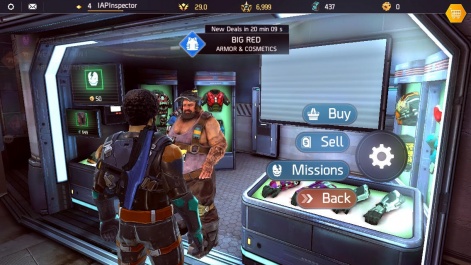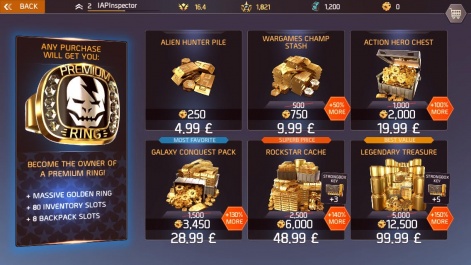Welcome back to the In-App Purchase Inspector – our regular look at free-to-play games from the consumer's perspective.
In each instalment, we consider the incentives or pressure applied to make in-app purchases, their perceived value, the expansion offered by IAPs and the overall value of the experience.
The end goal is to see whether the game makes a good enough case for us to part with our cash, or whether players are content – or engaged enough – to 'freeload'.
This time we're taking a look at Shadowgun Legends, the latest in Madfinger's sci-fi FPS series on mobile.
A new take
When the original Shadowgun launched in 2011, having a Gears of War-style third-person shooter on mobile seemed barely possible.
Shadowgun came with a premium price tag, as was standard for mobile games at the time, but the series took the leap to free-to-play – and multiplayer – with Shadowgun Deadzone in 2013.
And now Madfinger is keen to put another new spin on the series with Shadowgun Legends, a persistent-world FPS that invites comparisons with Destiny – and like the original Shadowgun in 2011, is very much at the forefront of mobile visuals.

It's a technical achievement if nothing else, but Madfinger CEO Marek Rabas told PocketGamer.biz last year to expect innovation in other areas; he promised “something different” in terms of monetisation.
So has Shadowgun Legends delivered?
Welcome break
Perhaps Rabas' most intriguing claim from the aforementioned interview was that “there will not be any typical mobile stuff like timers, energy bars or whatever”.
Shadowgun Legends really is free of timers and energy bars.
Indeed, these are some of the most-used monetisation mechanics on the platform, particularly when it comes to action games.
But there has been no back-pedalling in this department. Shadowgun Legends really is free of timers and energy bars, and limiting session length is evidently not part of its monetisation strategy.
Inevitably, though, other free-to-play monetisation staples do feature. The game has hard and soft currencies – their names curiously ambiguous in-game, but we'll refer to them here as Gold and Cash, respectively.
Gold comes in bundles ranging from $4.99 for 250 to $99.99 for 12,500 and is almost exclusively the preserve of paying players.
Retail therapy
Shadowgun Legends' bustling hub world is a large part of the experience, with its citizens celebrating your character's safe return from missions and numerous vendors serving up new missions and rewards.
Some also buy and sell items, such as armour and weaponry, which gives a more personal feel to virtual currency transactions and embeds them in the game's world.

For non-paying players, new gear can be gained through playing missions or by buying it using Cash. Players earn 300 Cash per day (an in-game “salary”), while more can be earned by completing quests.
Selling unwanted gear is obviously another way of earning Cash for new items, but this also serves the arguably more important function of clearing inventory space.
The inventory has only 16 slots by default, so it fills relatively quickly. This is the one major element of Shadowgun Legends' monetisation design in which scarcity plays a major role.
Room to breathe
Any purchase in Shadowgun Legends grants the player a Premium Ring, the most valuable perk of which is an additional 80 inventory slots.
For a game based heavily around gear and loot, this is a major boost that – for dedicated players – is worth investing for.

The inventory is really the centre of the game's monetisation strategy and this also comes to the fore with locked strongboxes.
These can be earned through playing missions, and occupy a slot in the inventory, but can only be opened using a key that costs 80 Gold (approximately $1.60).
With inventory space already tight, it makes the appeal of unlocking them twofold: not only do you get the items within, but also save some all-important space.
Away from the herd
So for the most part, Shadowgun Legends is successful in proving that mobile game monetisation can be built without timers or energy systems.
Worthy of note are the in-game billboards for Nvidia, though it's unclear whether Nvidia is paying for this placement.

But the vast majority of its purchasable items in Shadowgun Legends are cosmetic, with particular bundles and offers available from specific vendors on a rotating basis.
For those wanting randomised rewards, 100 Gold can also be used to spin the Lucky Wheel to get either gear, currency or strongboxes.
Elsewhere, the aforementioned strongbox mechanic and the centralising of the inventory is a clever take on the Clash Royale chest mechanic, without having to resort to timers.
Meanwhile, the complete lack of an energy mechanic – even for the PvP modes – is a brave move that encourages play first and foremost.
Only time will tell whether or not this approach can yield significant profits, but it's certainly a breath of fresh air to play.






















